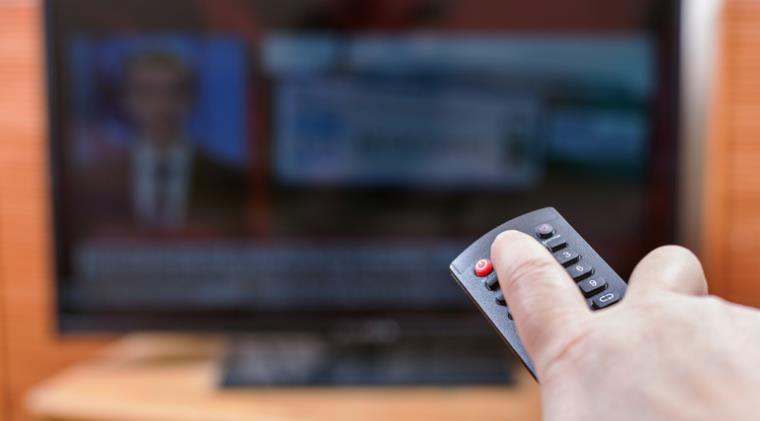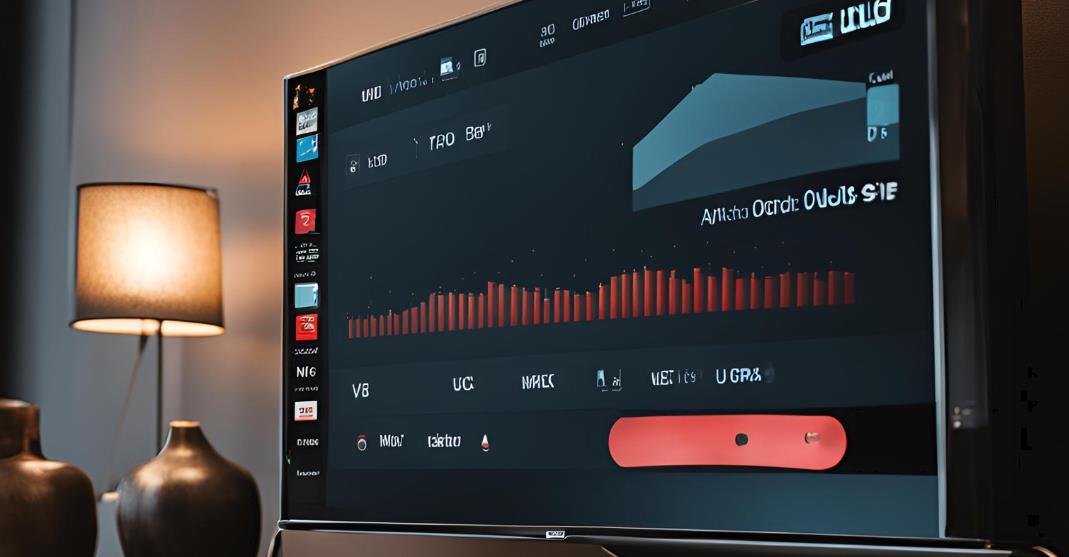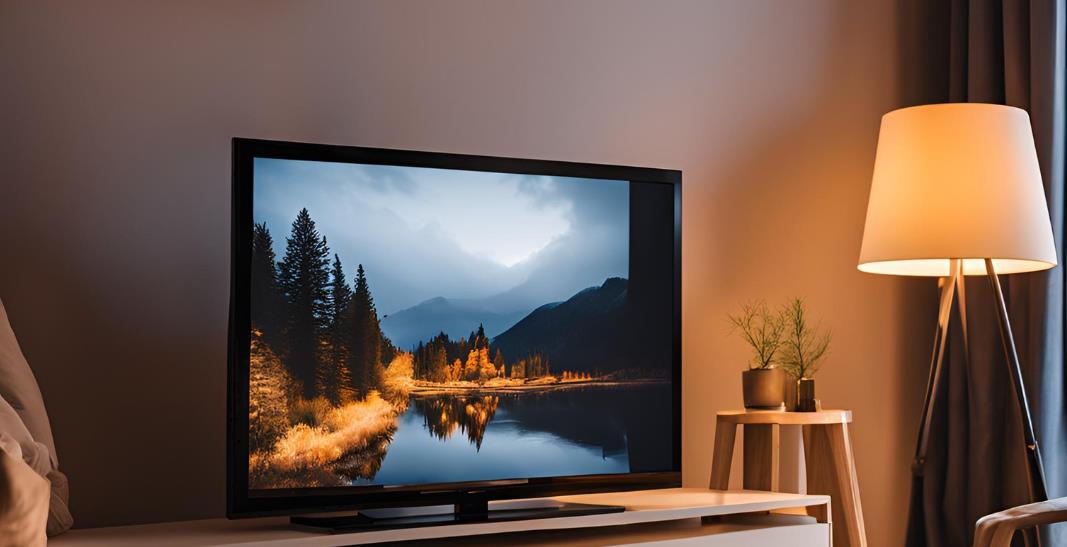The Insignia TV remote control is designed to offer a convenient way to navigate through your TV’s features and settings. Whether you’re a new owner or just looking to get the most out of your remote, understanding how to use it effectively can enhance your viewing experience. In this blog, let’s walk you through the essential functions and tips for using your Insignia TV remote.
Understanding Your Insignia TV Remote
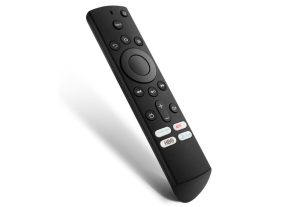
Image Credits: Amazon
The Insignia remote’s layout is designed for simplicity, ensuring that users can quickly learn to navigate and control their TV without a steep learning curve. Every button is strategically placed to maximize ease of use, allowing users to intuitively adjust settings and access features. For new users, it’s helpful to become familiar with each section of the remote, which will make daily use more efficient and enjoyable. Over time, using this remote will feel natural, enhancing your ability to interact with your TV seamlessly.
Here’s a detailed breakdown of the key components:
Power Button
Besides simply turning your TV on or off, the power button also affects power settings, allowing you to conserve energy when the TV is not in use. Some models offer an “Eco Mode” that can be activated by holding the power button, further reducing power consumption in standby. Learning how to use this button efficiently can make a difference, especially if you’re keen on energy conservation or managing multiple devices.
Number Pad
The number pad is particularly useful for those who regularly switch between a set list of favorite channels, allowing direct access to preferred programming with ease. Advanced users might also discover that the number pad can be used in certain settings menus, such as entering a pin or parental control code, making it a multifunctional feature on the remote.
Volume Controls
Aside from standard volume adjustment, some remotes have an extra sound mode button that, when used in conjunction with volume controls, can switch between audio modes like “Theater,” “Music,” or “Speech.” These modes enhance the sound output to suit different types of content, providing a richer viewing experience. Familiarizing yourself with this feature can be especially useful for optimizing sound quality.
Channel Controls
Using the channel controls, you can explore additional options for browsing. Some remotes enable a “favorites” option, where you can cycle through only your pre-set favorite channels instead of the entire list. This is perfect for families or households that have specific channels they prefer watching, making TV navigation faster and more tailored.
Menu Button
The menu button not only opens settings but is also your access point for viewing essential software updates. Keeping your TV updated ensures that you’re benefiting from the latest features and improvements from Insignia. By familiarizing yourself with this menu option, you can maintain optimal TV performance and explore newer capabilities as they’re released.
Arrow Keys
Besides navigating menus, the arrow keys can also be used in specific apps, such as streaming services, to browse content quickly. In some cases, pressing and holding an arrow key provides a faster scrolling effect, allowing you to cover more ground when navigating long lists or options. This function is helpful in efficiently exploring content-rich apps like Netflix or Hulu.
Enter/OK Button
The Enter or OK button is also used to confirm purchases or rentals on smart platforms, making it essential for accessing premium content or subscriptions directly through the TV. This button often doubles as a “play” or “pause” function in certain on-demand services, enhancing its utility beyond basic menu selection.
Back Button
The back button is more versatile than simply going back one step; it can be used to exit apps or return to live TV instantly. When navigating streaming services or on-demand content, it allows you to switch between menus and main screens without fully closing the application. This is especially useful for viewers who regularly use various apps on their Insignia TV.
Input Button
Many Insignia remotes allow users to set favorite inputs, making switching even more efficient. This feature is handy if you regularly switch between devices like a gaming console and a DVD player. By customizing input shortcuts, you can streamline your TV experience, eliminating the need to scroll through multiple input options each time. This button allows you to switch between different input sources connected to your TV, such as HDMI, AV, or VGA.
Pairing the Remote with Your Insignia TV
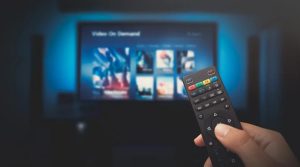
If you have a new Insignia TV remote or have recently replaced the batteries, you might need to pair the remote with your TV to ensure proper functionality. Pairing the remote is a straightforward process that usually requires no more than a few minutes. However, if issues arise, you may need to troubleshoot by resetting both the remote and the TV. This reset can often solve pairing issues, allowing for seamless communication between the devices without additional pairing attempts. To pair your Insignia remote:
Turn on the TV: Make sure your TV is powered on. The remote must communicate with the TV to work.
Press and Hold the Pairing Button: Locate the pairing button on the remote. On some models, this might be labeled as “Pairing,” “Setup,” or have a symbol like a small remote or a chain link. Press and hold this button for a few seconds.
Follow On-Screen Instructions: If your TV requires pairing, you may see on-screen instructions prompting you to complete the process. Follow these instructions carefully to pair your remote.
Test the Remote: Once the pairing process is complete, test the remote by pressing various buttons to ensure it is working correctly. If the remote is still unresponsive, refer to the troubleshooting steps for further assistance.
How to Use Insignia Tv Remote?
Turning the TV On/Off
Power Button: Press the power button once to turn on the TV. If the TV does not respond, check the remote’s batteries and ensure they are properly inserted and charged. To turn off the TV, press the power button again. In standby mode, the TV is not completely off but ready to be quickly turned back on. Standby mode helps with energy efficiency and prolongs the TV’s life by reducing the wear from frequent power cycling. This option is particularly useful if you watch TV throughout the day. Using standby, your TV stays ready to turn on quickly without experiencing the full reboot process each time, enhancing convenience.
Troubleshooting: If the TV doesn’t turn on, ensure that the power cord is properly plugged into both the TV and the wall outlet. If the remote is unresponsive, try using the physical power button located on the TV itself as a temporary measure.
Changing Channels
Exploring your TV’s channel guide or program list provides a visual and organized approach to switching channels, especially if you’re looking for new shows. With the number pad and guide feature, you can effortlessly navigate your available channels, ensuring you’re aware of all the programming options at your fingertips.
Number Pad: Input the channel number you want to watch directly using the number pad. This method is fast and efficient for jumping to a specific channel without scrolling through each one.
Channel Up/Down: Use the channel up and down buttons to cycle through channels sequentially. This is helpful for exploring channels without knowing their exact numbers.
Channel Guide: Some Insignia remotes include a guide button that opens an on-screen guide displaying available channels and current programming. This feature can help you quickly find and select channels based on content.
Adjusting Volume
Some Insignia remotes also have audio presets to amplify specific ranges, such as dialogue or bass. For instance, if you frequently watch movies, you can adjust settings to prioritize bass output for a cinematic effect. These small adjustments can make a big difference in enhancing your sound experience based on the content you’re watching.
Volume Buttons: Press the volume up or down buttons to adjust the sound level to your preference. If the volume is too low or too high, these buttons offer a quick and easy way to make adjustments.
Mute Button: The mute button, often located near the volume controls, can instantly silence the TV. This is useful for quickly muting the TV without changing the volume level, such as when you need to answer a phone call or pause for a brief conversation.
Navigating the Menu
In addition to core settings, some menus include parental controls that allow you to restrict specific channels or set a viewing time limit. These options can be especially valuable for parents who want to manage their children’s screen time or content exposure. By exploring the menu fully, you can unlock settings that best suit your household’s needs.
Menu Button: Press the menu button to open the TV’s main menu. This menu gives you access to various settings and features, such as picture settings, sound settings, and input selection.
Arrow Keys and Enter/OK Button: Use the arrow keys to navigate through the menu options. Once you’ve highlighted the desired option, press the Enter or OK button to select it and make changes. This combination allows you to explore and configure various settings on your TV.
Switching Input Sources
Many Insignia TVs offer customizable names for each input, allowing you to label them as “Gaming Console” or “DVD Player.” This small but helpful feature can simplify the viewing experience, as users instantly recognize which input connects to which device, eliminating guesswork and streamlining input selection.
Input Button: Press the input button to cycle through the different input sources connected to your TV. This allows you to switch between HDMI inputs, AV inputs, and other connected devices.
Quick Access: If you frequently switch between devices (e.g., a gaming console and a streaming device), familiarize yourself with the input button’s shortcuts. Some remotes or TVs allow you to directly access specific input sources with dedicated buttons.
Advanced Features and Customization
Using the Guide Function
For those who like planning their viewing schedule, the guide function also allows you to set reminders for upcoming shows. This is especially helpful for avoiding missed episodes or special events. By setting reminders through the guide, you can optimize your viewing schedule and ensure you’re never out of the loop on your favorite programming.
Guide Button: The guide button provides an on-screen channel guide that displays current and upcoming TV programs. This feature is useful for planning what to watch and finding shows without having to manually switch channels.
Navigating the Guide: Use the arrow keys to scroll through the guide and view detailed program information. The Enter or OK button allows you to select and tune into the highlighted program.
Programming the Remote

Some Insignia remotes can store multiple devices, enabling you to manage not only your TV but also other devices in your home entertainment setup. Once you’ve programmed the remote, you’ll have a central control for everything from DVD players to streaming boxes, simplifying your entire setup.
Universal Remote Setup: If you want to control other devices, such as a DVD player or sound system, with your Insignia remote, you may need to program it. This involves entering specific codes for the devices you wish to control.
Code Search: Refer to the remote’s user manual for a list of device codes and programming instructions. Some remotes offer an auto-search feature to find the correct code automatically.
Customizing Settings
Adjusting settings for specific viewing conditions, like daytime or nighttime, can make a noticeable difference. By saving these adjustments as presets, you can easily switch back and forth depending on the lighting or type of content. This customization adds flexibility to your viewing experience, allowing you to optimize settings for any scenario.
Picture and Sound Settings: Access advanced picture and sound settings through the TV’s menu. Adjust settings such as brightness, contrast, and color temperature to suit your viewing environment and personal preferences.
Saving Presets: Some Insignia TVs allow you to save different picture and sound settings as presets. This can be useful for quickly switching between settings for different types of content or viewing conditions.
Using Smart Features
Smart features on Insignia TVs also allow for software updates, ensuring you have the latest apps and capabilities. Regularly exploring the available apps may reveal new options for streaming, music, or social media, helping you make the most out of your smart TV’s ever-expanding capabilities.
Apps and Streaming: If your Insignia TV has smart features, use the remote to navigate and access apps and streaming services. The arrow keys and Enter button help you select and launch apps, while the menu button provides access to the smart TV interface.
Voice Control: Some newer Insignia remotes may include voice control features. Use the microphone button to issue voice commands for searching content or controlling TV functions.
Troubleshooting Common Issues
In addition to the basics, try using your smartphone camera to check if your remote’s infrared (IR) signal is functioning. Simply point the remote’s IR emitter toward the camera and press a button; if it’s working, you should see the light through the camera. This quick trick can help determine if the issue is with the remote or the TV’s receiver.
Remote Not Responding
Check Batteries: When your remote stops responding, battery issues are often the first place to look. Weak or depleted batteries can prevent the remote from sending a strong enough signal to the TV. Replacing old batteries with fresh, high-quality ones can usually resolve this problem. Always ensure that the batteries are inserted with the correct polarity, as improper placement can also disrupt the remote’s functionality. Keeping spare batteries on hand can be helpful, especially if you use your remote frequently.
Clear Obstructions: The remote relies on a clear line of sight to communicate with the TV’s infrared (IR) receiver. Minor obstructions, such as dust, household objects, or other electronics, can disrupt this connection. Regularly check that the area between the remote and the TV is free from obstructions. Removing these can help improve response times and make controlling the TV easier. Sometimes, even placing other electronics too close to the IR receiver can cause interference, so ensure a clear path for optimal performance.
Remote Not Working with Other Devices
Reprogram the Remote: If your remote is designed to control multiple devices but suddenly stops working with one of them, it may need to be reprogrammed. This process often involves entering a specific code that corresponds to each device. Refer to the remote’s manual for the correct programming codes, as they can vary by device. Reprogramming is generally quick and straightforward, and it can restore control across all compatible devices, making it easier to manage your entertainment setup with a single remote.
Check Compatibility: Not all remotes are universal or compatible with every device. Some older models or specialized electronics may not be recognized by standard remotes. Before assuming there’s an issue, check your remote’s compatibility list, typically found in the user manual or online. Ensuring compatibility will save you time and help avoid unnecessary troubleshooting steps. If your remote isn’t compatible with a particular device, you may need to consider a separate remote or a different universal model.
Unresponsive Buttons
Clean the Remote: Over time, dirt, dust, and grime can accumulate on and beneath the remote buttons, causing them to become unresponsive or sticky. Cleaning the remote can often solve this problem. Use a soft, dry cloth to wipe down the surface, and compressed air to dislodge debris around the buttons. Avoid using liquids or harsh chemicals, as these can damage the electronics. Keeping the remote clean will improve its longevity and ensure smooth, responsive buttons for all your TV functions.
Inspect for Damage: Physical damage can also cause buttons or the remote itself to stop working correctly. Inspect the remote for any visible signs of cracks, broken buttons, or internal damage, which may require professional repair or replacement. Even if the damage isn’t apparent, internal components may have shifted or broken over time, particularly if the remote has been dropped. Addressing these issues quickly can prevent further damage and help restore your remote to optimal working condition.
Mastering the Insignia TV remote can significantly enhance your viewing experience by providing easy access to various features and settings. By understanding the basic functions, exploring advanced features, and troubleshooting common issues, you can make the most out of your Insignia TV remote.
FAQs on How to Use Insignia TV Remote
How do I pair my Insignia remote with my TV?
Turn on the TV, then press and hold the pairing button on the remote. Follow any on-screen instructions. If needed, replace the batteries or consult the user manual.
My Insignia remote isn’t responding. What should I do?
Check and replace the batteries. Ensure nothing is blocking the remote’s signal to the TV. If problems persist, use the TV’s physical power button to check if the TV is working.
How can I program my Insignia remote to control other devices?
Enter device codes from the remote’s user manual to program it for other devices. Some remotes offer an auto-search feature to find the correct code.
What should I do if some buttons on my Insignia remote are not working?
Clean the remote with a dry cloth and use compressed air to clear any debris. If buttons remain unresponsive, check for physical damage.
How do I access the TV’s menu using my Insignia remote?
Press the “Menu” button to open the settings menu. Use the arrow keys to navigate and the Enter button to select options.
Can I use my Insignia remote to control smart TV features?
Yes, use the arrow keys and Enter button to navigate apps and streaming services. Some models may also include voice control.

